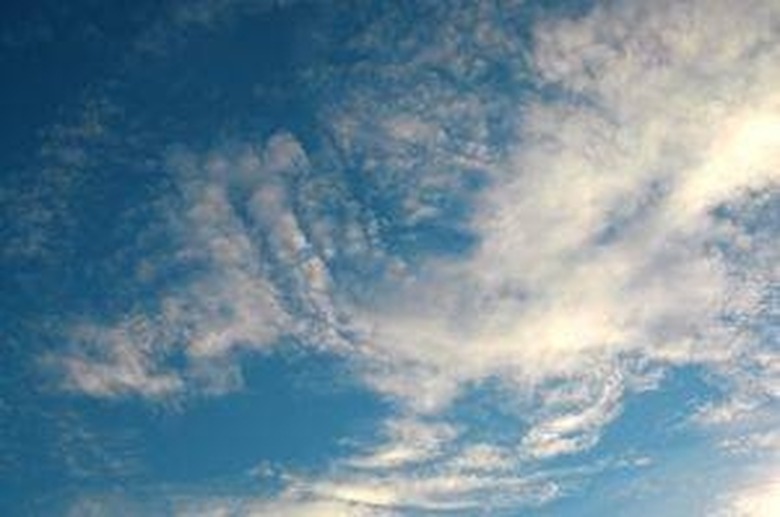What Is Ozone Layer Depletion?
In 1974, chemists Mario Molina and Sherwood Rowland of the University of California, Irvine, first warned of the danger of ozone deterioration in the atmosphere. Their predictions were corroborated by observation in 1985, when an ozone hole was detected above the Antarctic. The world took notice and agreed in Montreal in 1987 to do something about the depletion of the ozone layer. In 2018, scientists cautiously announced that the ozone hole, which has been growing since it was discovered in 1985, may have started to shrink. If the actions of humans have brought about an ozone layer healing, the international community has proven that it can solve serious environmental problems when everyone works together.
What Is Ozone and Where Is the Ozone Layer?
What Is Ozone and Where Is the Ozone Layer?
High above the ground – between 9 and 18 miles (15 and 30 kilometers) to be exact – a thin layer of ozone absorbs ultraviolet sunlight, thus protecting everything and everyone on the ground from exposure to the deadly radiation. The ozone molecule (O3) is composed of three oxygen atoms. It forms when atmospheric oxygen (O2) interacts with solar radiation and breaks apart into two oxygen atoms; each atom then joins up with an oxygen molecule. The ozone molecule is unstable, so it soon decays to again form molecular oxygen. This cyclic process absorbs radiation and is constantly occurring in the upper reaches of the stratosphere.
Scientists measure the ozone layer in Dobson units, which is the number of ozone molecules it takes to make a layer 0.01 millimeters thick. The average thickness of the ozone layer is 300 Dobson units, or about 3 millimeters. That isn't very thick – it's about the thickness of three pennies stacked together.
Ozone Depletion Definition and How It Happens
Ozone Depletion Definition and How It Happens
Ozone depletion is caused by chemicals containing the elements chlorine and bromine, which are halogens. They are important components of a class of refrigerants called chlorofluorocarbons (CFCs) that were in heavy use in the mid 20th century. CFCs are inert and able to migrate to the upper atmosphere on wind currents, where the sun's ultraviolet energy breaks them apart.
Chlorine and bromine atoms are highly reactive, and once freed from the CFC molecules, they react with the extra oxygen atom in ozone to produce the hypochlorite (ClO-) or hypobromite (BrO-) ions and molecular oxygen. These ions are still unstable, and they react with a second ozone molecule to produce more molecular oxygen and leave the halogen ion free to start the process over again.
The most severe depletion of the ozone layer occurs over the South Pole in late winter and early spring. At that time, the ozone layer is reduced to as little as 100 Dobson units, or about the thickness of a dime. Since it was discovered, this "ozone hole" has grown larger in each successive Antarctic winter before it disappears in the summer.
The Montreal Protocol and Ozone-Layer Healing
The Montreal Protocol and Ozone-Layer Healing
In 1987, a group of 24 nations met in Montreal and negotiated the "Montreal Protocol on Substances That Deplete the Ozone Layer." They agreed to phase out the use of CFCs and other ozone-depleting chemicals by 1995. Since that time, the ozone hole has continued to grow, largely due to chemicals that were already in the atmosphere. However, in 2016, a group of MIT scientists found evidence of ozone-layer healing. The Antarctic ozone hole begins growing later in the season, does not grow as large and is no longer as deep. The scientists see this as proof that the Montreal Protocol is working. If it is and continues to do so, they expect the hole to completely heal by the middle of the 21st century.
Cite This Article
MLA
Deziel, Chris. "What Is Ozone Layer Depletion?" sciencing.com, https://www.sciencing.com/what-ozone-layer-depletion-4601116/. 22 November 2019.
APA
Deziel, Chris. (2019, November 22). What Is Ozone Layer Depletion?. sciencing.com. Retrieved from https://www.sciencing.com/what-ozone-layer-depletion-4601116/
Chicago
Deziel, Chris. What Is Ozone Layer Depletion? last modified August 30, 2022. https://www.sciencing.com/what-ozone-layer-depletion-4601116/
